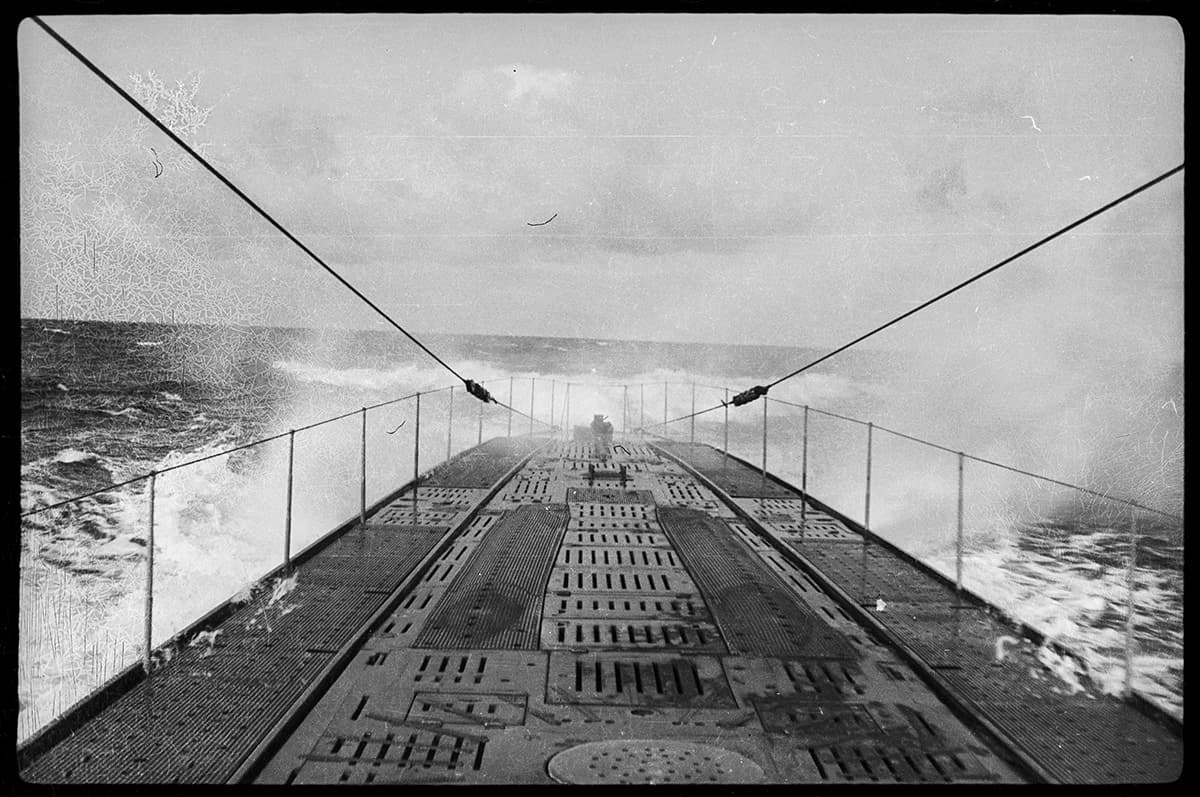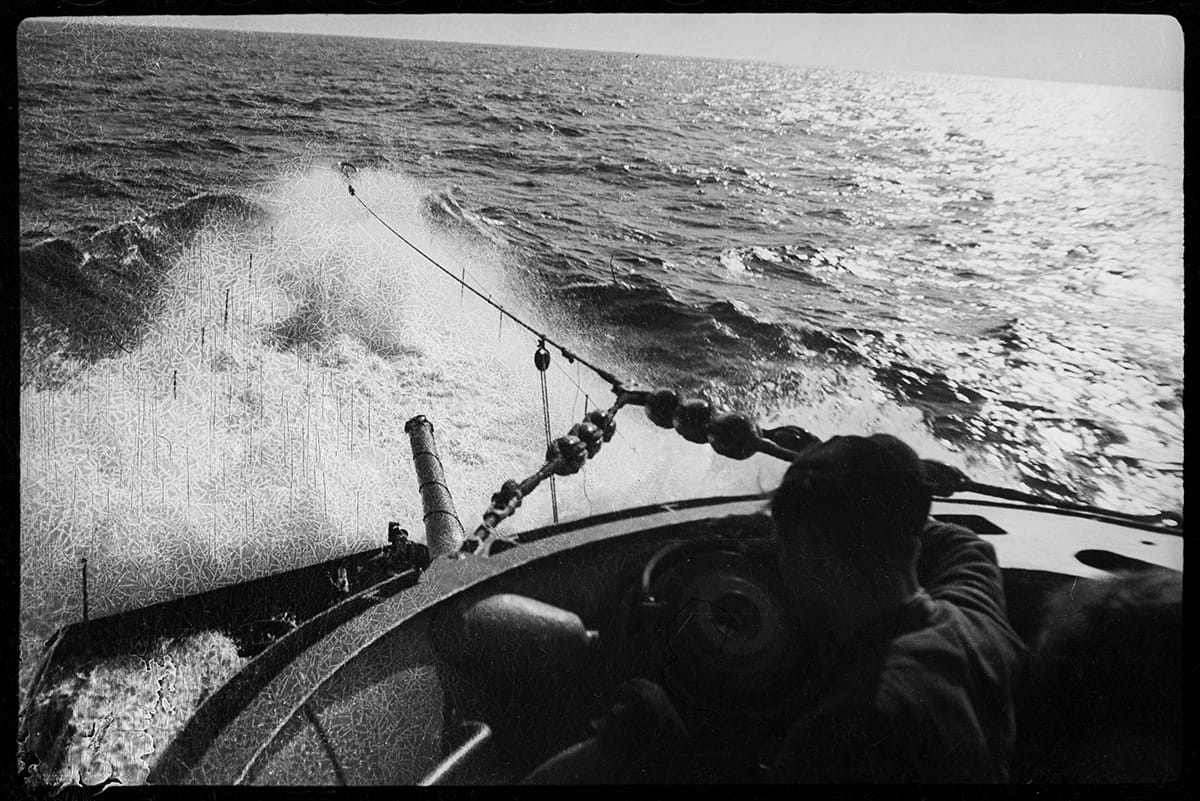
The last photographs on board the German submarine U-104
During its existence (about nine and a half years), the German submarine fleet managed to write itself into the military history as the most numerous and deadly submarine fleet of all times.
The date of foundation of the German submarine fleet is November 1, 1934, and the end of existence - along with the surrender of Germany in World War II. The Kriegsmarine (German Navy) had 1154 submarines of 21 types, built in German shipyards, 57 submarines were built before the war, and 1097 - in the period after September 1, 1939. The average rate of commissioning of German submarines during World War II was 1 new submarine every two days.
During World War II, German submarines made 3,587 combat missions and sank 3,083 cargo ships with a total tonnage of 14528570 GRT (Gross Register Tonnage - a unit of measurement of a ship's cargo capacity), and among military vessels 2 battleships, 7 aircraft carriers, 9 cruisers and 63 destroyers. The German submarines were nicknamed "Gray Wolves" and their attack tactic was called "Wolfpack" (pursuit and simultaneous attack of an enemy convoy by a group of submarines in order to gain a tactical advantage over the forces of anti-submarine escort). During the war 766 German submarines were irretrievably lost, and only 10,000 submariners from 40,000 returned home.
We recently managed to find one previously unknown black and white film Agfa Isopan F, which preserved a unique 15 shots of the submarine U-104. It is important to say that not a single picture of the German submarine U-104 or its crew has survived, which makes this film even more valuable.
All of the photos were taken by an unknown submariner in October 1940. The film itself was in rather poor condition with numerous cracks and tears. Taking in account the dust that was inside the photo emulsion layer, the film was most likely developed under a blanket or jacket, inside the submarine during the mission.
U-104 was a German large ocean submarine Type IXB, with the factory number 967. The boat was launched on May 25 from the AG Weser shipyard (Bremen) and commissioned on August 19, 1940. The boat was 76.5 meters long, 6.76 meters wide and 9.60 meters high. The boat could dive to a depth of 230 meters and had a maximum surface speed of 18.2 knots (33.7 km/h) and a maximum underwater speed of 7.3 knots (13.5 km/h). U-104 was equipped with six 53.3 cm (21 in) torpedo tubes (four forward and two aft), 22 torpedoes, one 105 mm (4.13 in) SK C/32 10.5 cm (4.13 in) gun, 180 rounds and a 3.7 cm (1.5 in ) SK C/30, and a 2 cm (0.79 in) C/30 gun.
U-104 was a part of the 2nd submarine fleet and during its history made two missions: one - training (from August 19 to October 31, 1940) and the second - combat (from November 1, 1940). During the combat mission the submarine left the German port of Kiel, went around England from the north, and attacked two vessels on November 27. The first was an attack on the British tanker Charles F. Meyer (10,516 GRT), of convoy HX-87. U-104 succeeded in hitting and damaging it. And the second was an attack on the British steamer Diplomat (8,240 GRT), of convoy HX-88. The steamer was sunk. The captain and 13 crew members drowned, and 39 men were picked up by the British destroyer HMS Active.
The captain of the submarine U-104 was Harald Jürst. Captain Jürst sank 15 ships and damaged 1 during his career. He totaled 9 combat missions, which is a lot, and was awarded the Iron Cross 1st Class. Based on the fact that almost all of his campaigns were successful, we can say that he was a novice submarine ace. His previous submarine was attempted to be torpedoed, and on the first combat mission of his new boat U-104, which is pictured in the photos, he immediately demonstrates his experience, as he damaged and sank two large convoy ships, which must have been covered by destroyers.
After November 27, captain Harald Jürst and the crew of submarine U-104 disappeared. It is considered that the submarine probably exploded in the British minefield SN 44 in the North Atlantic, northwest of Tory Island, Ireland (at approximately 55°30' N 08°00' W). Mine barrage SN 44 had been placed just a couple of days before the boat entered this sector. All 49 crewmen, including officers and captain, as well as the boat itself, have been reported missing to this day.

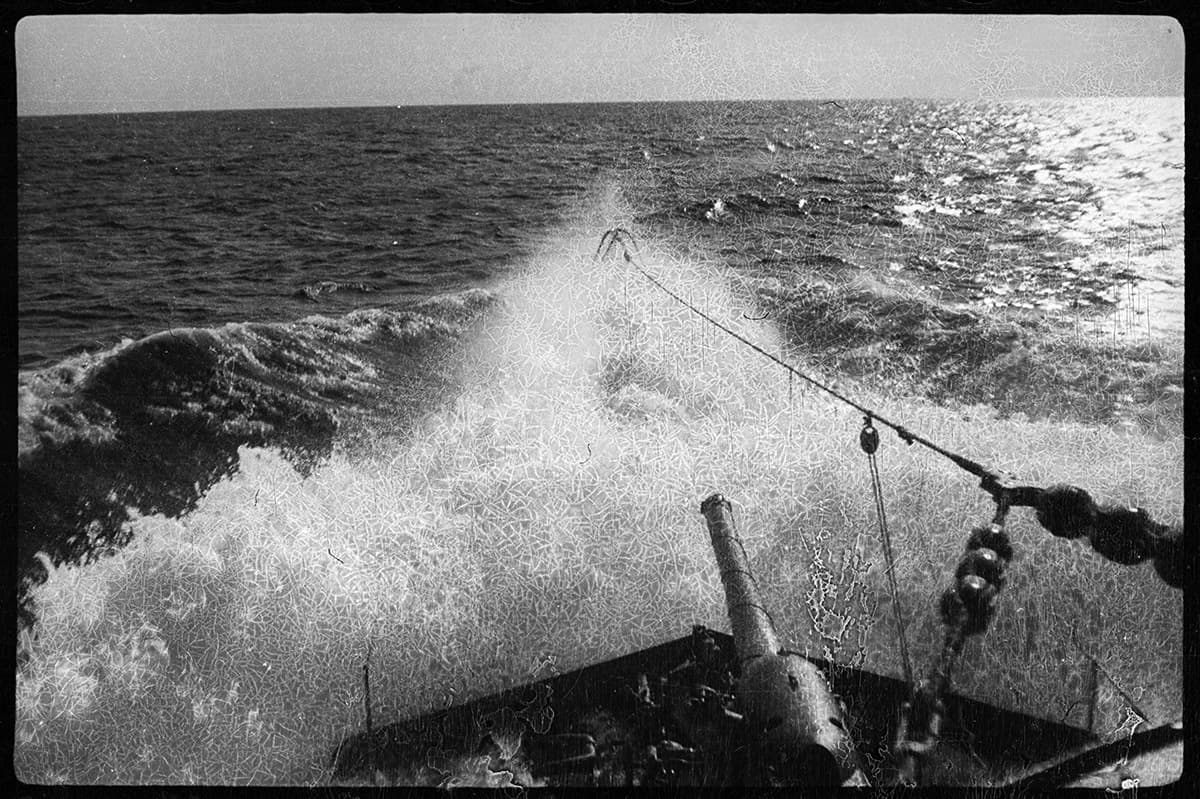
The submarine is in semi-submerged position. The photo was taken from the deckhouse. In the foreground can be seen 105-mm gun (10.5-cm SK C/32). The Baltic Sea. October 1940.
The submarine is in semi-submerged position. The photo was taken from the deckhouse. In the foreground can be seen 105-mm gun (10.5-cm SK C/32). The Baltic Sea. October 1940.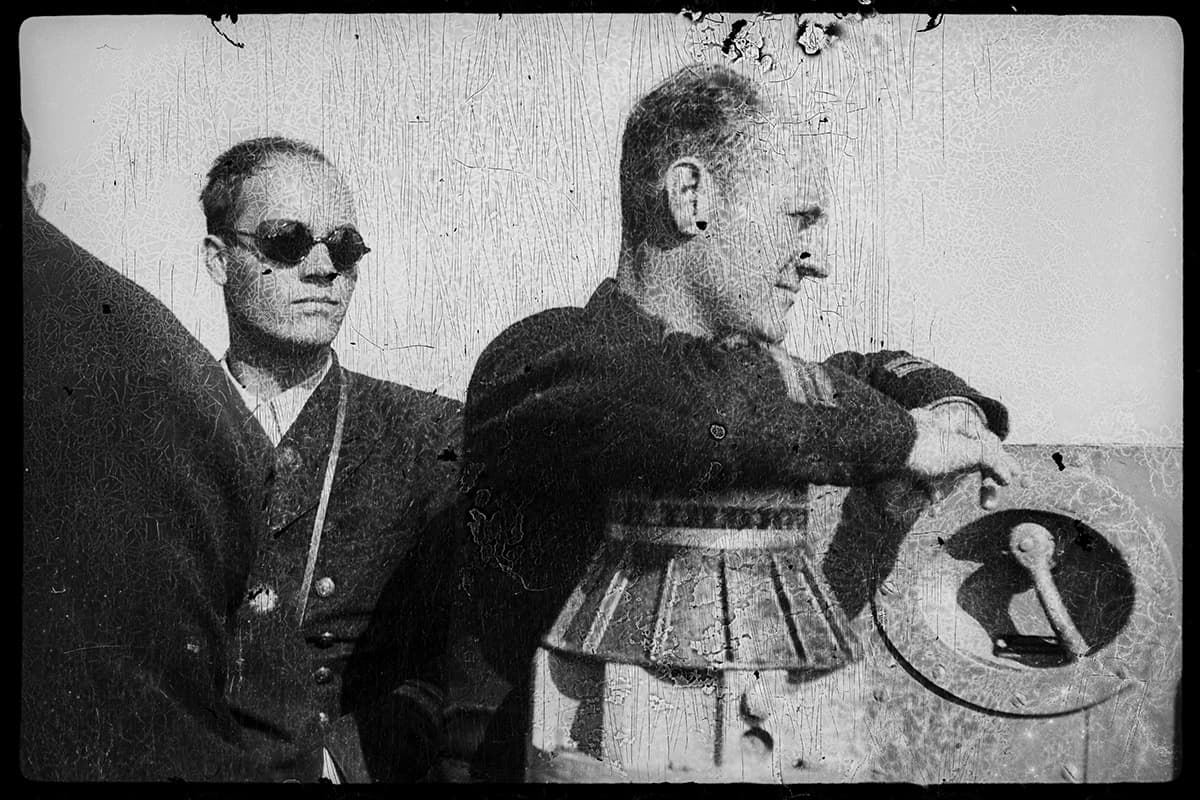
An officer and his crew are resting on the upper deckhouse leaning on the stand of the optical firing control device (UZO). Taking into account shaved of the crew it can be assumed that it is the first days of the mission. The Baltic Sea. October 1940.
An officer and his crew are resting on the upper deckhouse leaning on the stand of the optical firing control device (UZO). Taking into account shaved of the crew it can be assumed that it is the first days of the mission. The Baltic Sea. October 1940.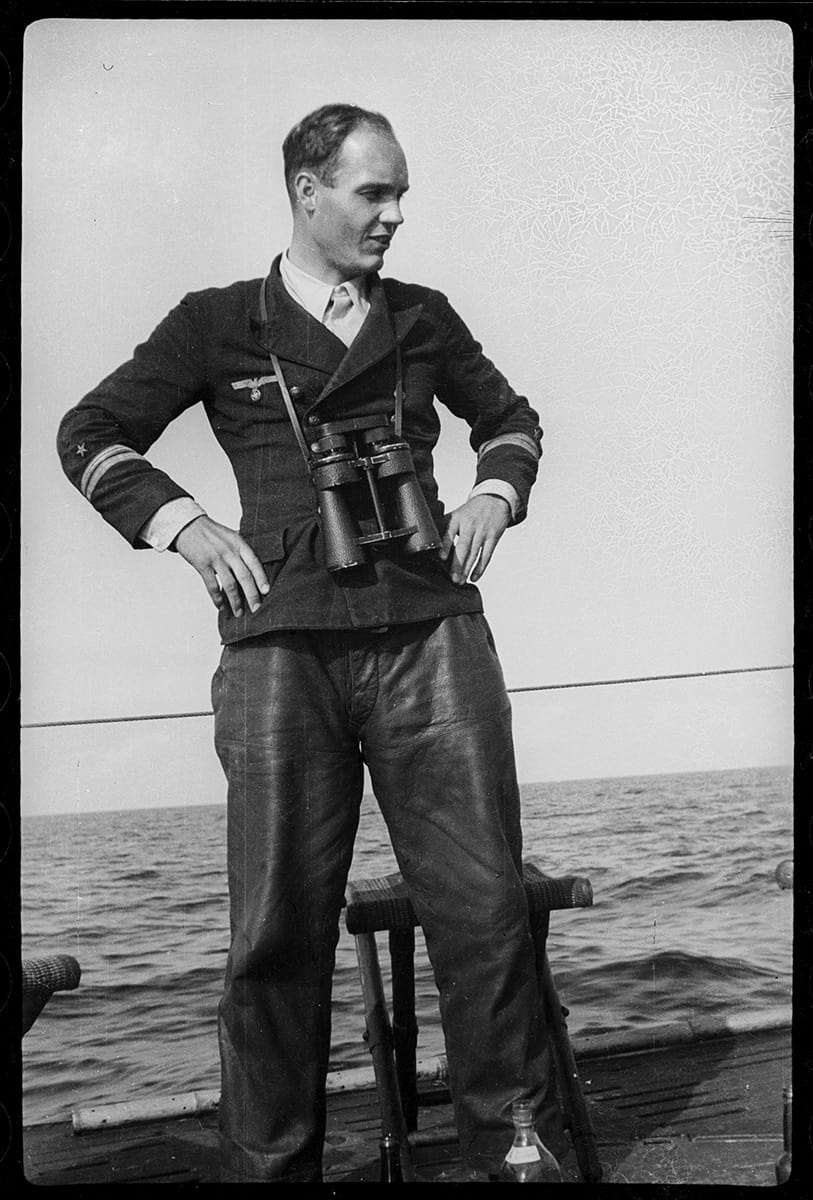
Possibly a watch officer with a bottle and folding chairs. The Baltic Sea. October 1940.
Possibly a watch officer with a bottle and folding chairs. The Baltic Sea. October 1940.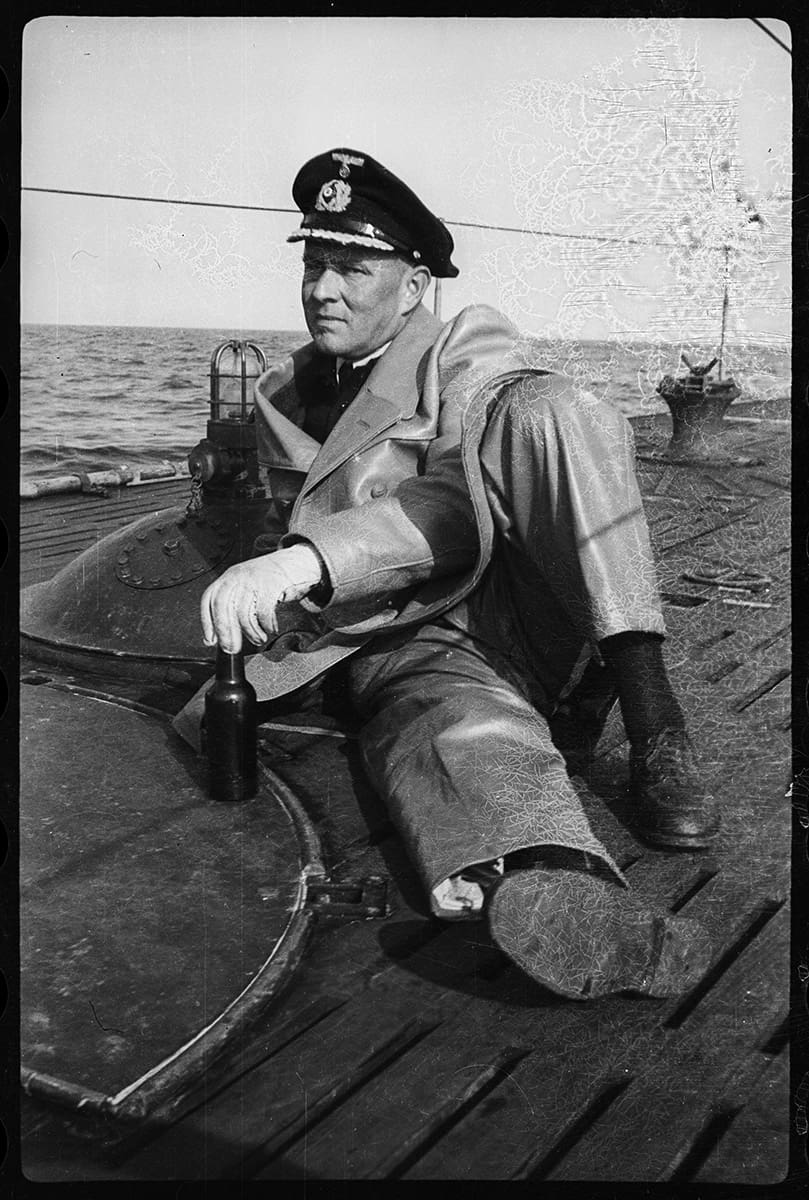
Captain Harald Jürst lying on deck with a bottle. The Baltic Sea. October 1940.
Captain Harald Jürst lying on deck with a bottle. The Baltic Sea. October 1940.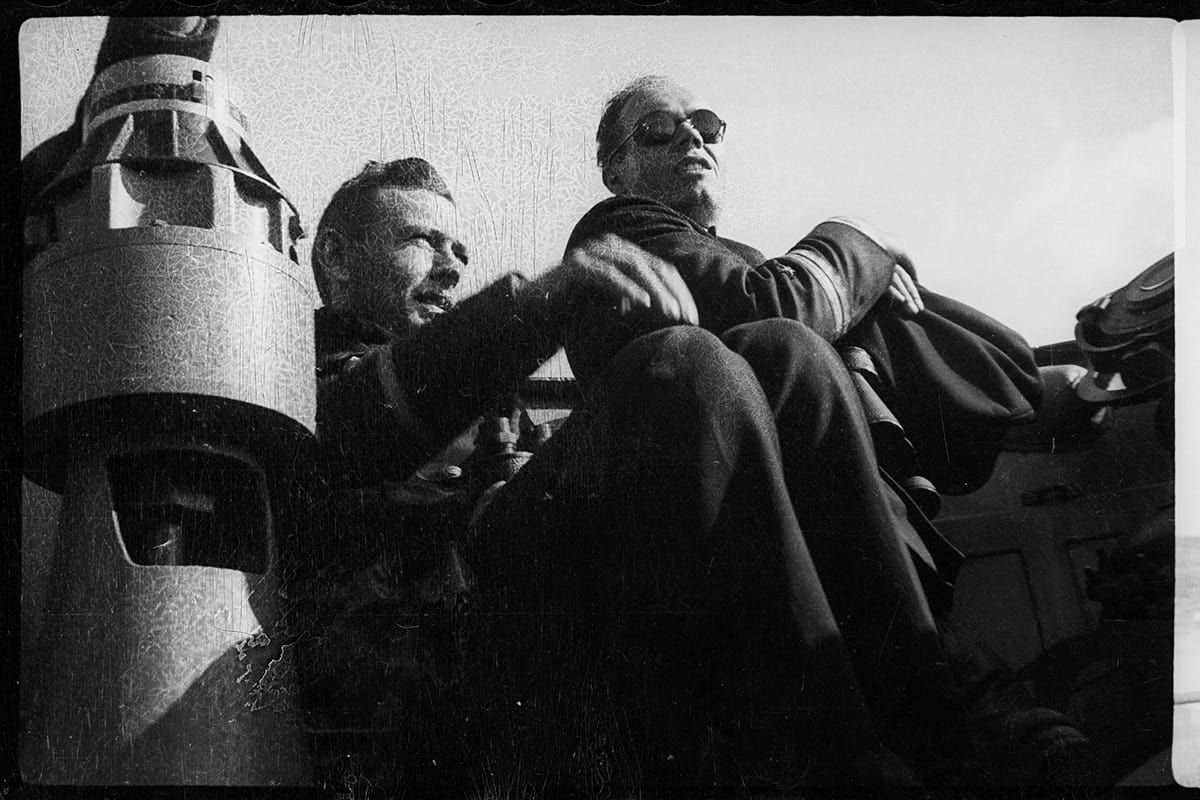
Captain Harald Jürst lying on deck with a bottle. The Baltic Sea. October 1940.
Captain Harald Jürst lying on deck with a bottle. The Baltic Sea. October 1940.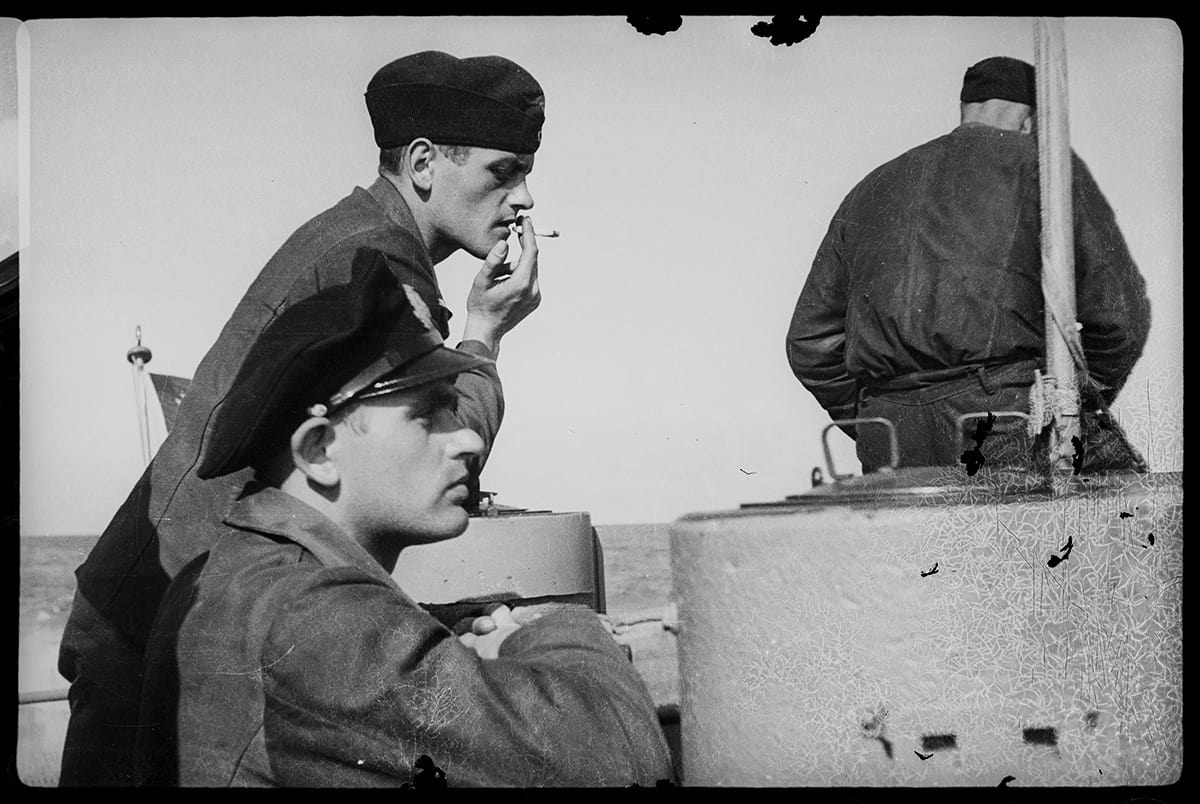
The crew together with the watch has a rest on the deckhouse. Periscopes can be seen on the right. This is the only opportunity to smoke a cigarette on a boat for smokers. Taking into account shaved of the crew it can be assumed that it is the first days of the mission. The Baltic Sea. October, 1940.
The crew together with the watch has a rest on the deckhouse. Periscopes can be seen on the right. This is the only opportunity to smoke a cigarette on a boat for smokers. Taking into account shaved of the crew it can be assumed that it is the first days of the mission. The Baltic Sea. October, 1940.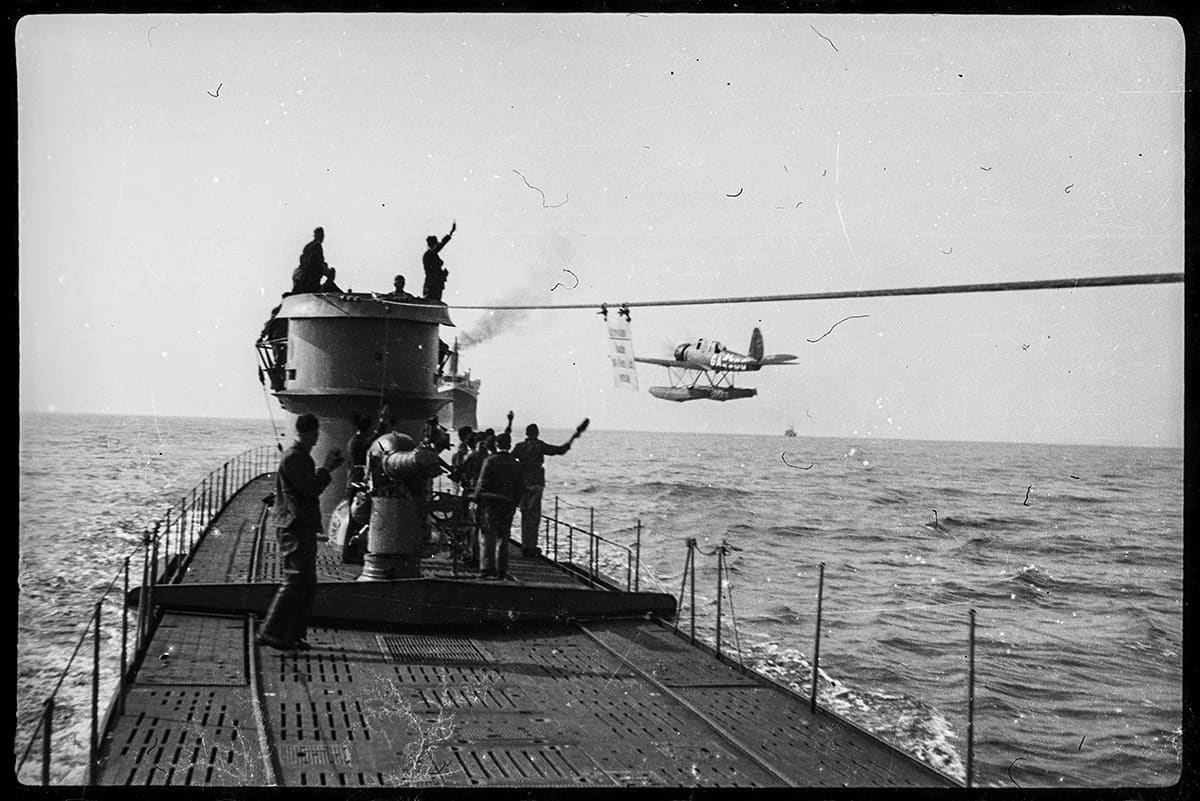
The submariners wave to the pilot of an Ar-196 A4 GA+DQ aircraft No. 1960117, of 3.(Bord)/Fl.Erg.Gr.(See), which took off from Aalborg airfield and flies past the submarine. The Hugo Zeye ship is probably sailing behind. Kattegat Strait or the Baltic Sea. Possibly between October 21-31, 1940.
The submariners wave to the pilot of an Ar-196 A4 GA+DQ aircraft No. 1960117, of 3.(Bord)/Fl.Erg.Gr.(See), which took off from Aalborg airfield and flies past the submarine. The Hugo Zeye ship is probably sailing behind. Kattegat Strait or the Baltic Sea. Possibly between October 21-31, 1940.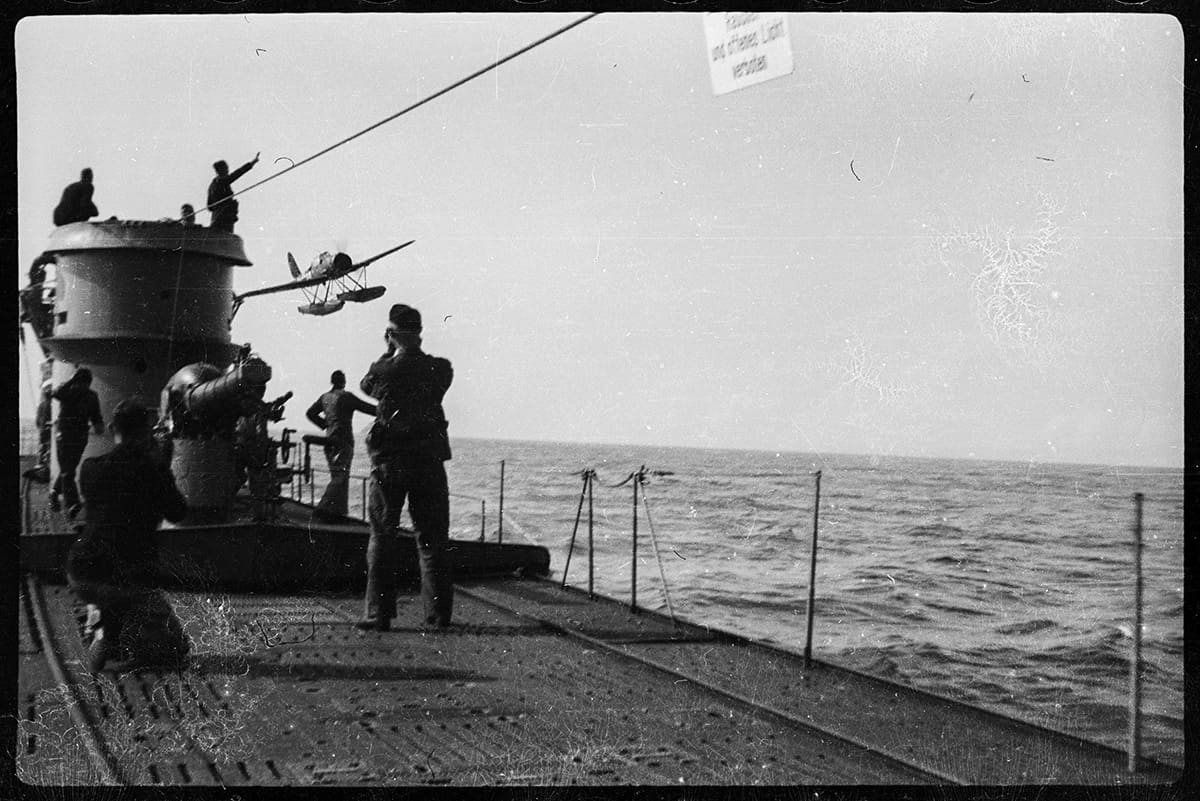
The submariners wave to the pilot of an Ar-196 A4 GA+DQ aircraft No. 1960117, of 3.(Bord)/Fl.Erg.Gr.(See), which took off from Aalborg airfield and flies past the submarine. Kattegat Strait or the Baltic Sea. Possibly between October 21-31, 1940.
The submariners wave to the pilot of an Ar-196 A4 GA+DQ aircraft No. 1960117, of 3.(Bord)/Fl.Erg.Gr.(See), which took off from Aalborg airfield and flies past the submarine. Kattegat Strait or the Baltic Sea. Possibly between October 21-31, 1940.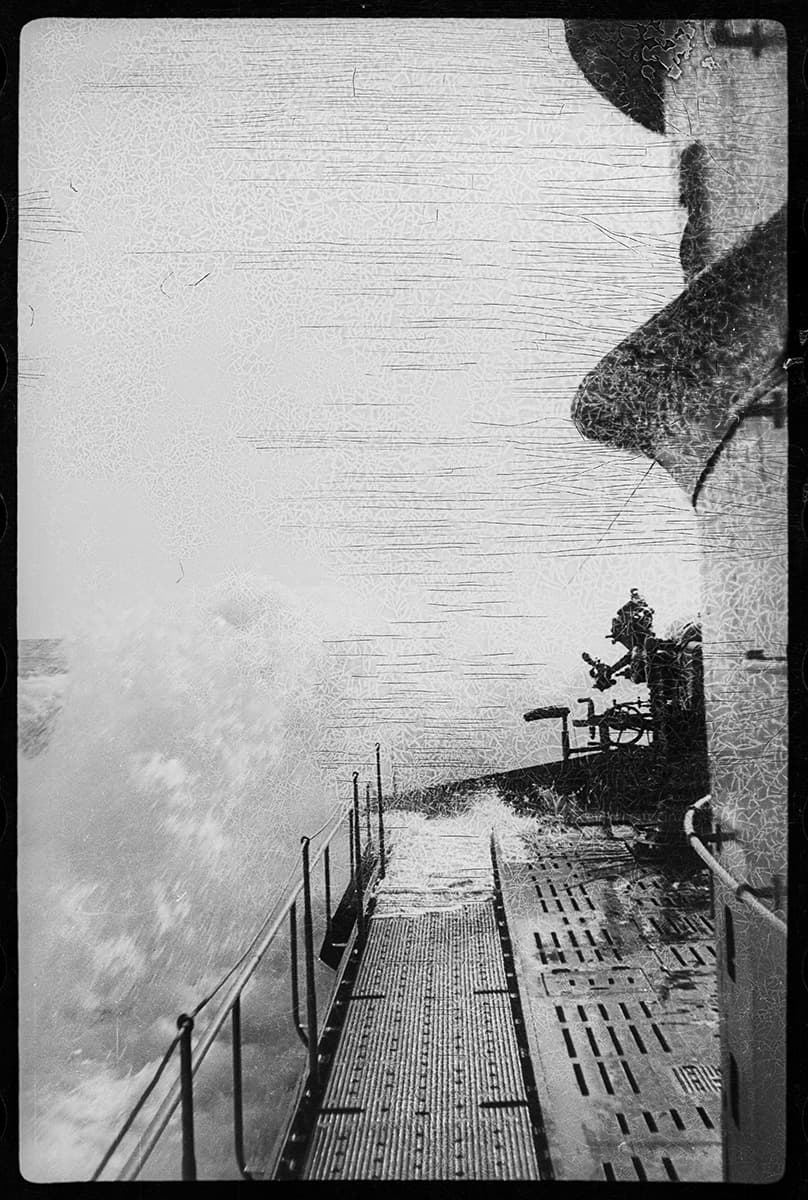
The submarine in bad weather. The 105-mm gun (10.5-cm SK C/32) can be seen at the front of the deckhouse. The Baltic Sea. October 1940.
The submarine in bad weather. The 105-mm gun (10.5-cm SK C/32) can be seen at the front of the deckhouse. The Baltic Sea. October 1940.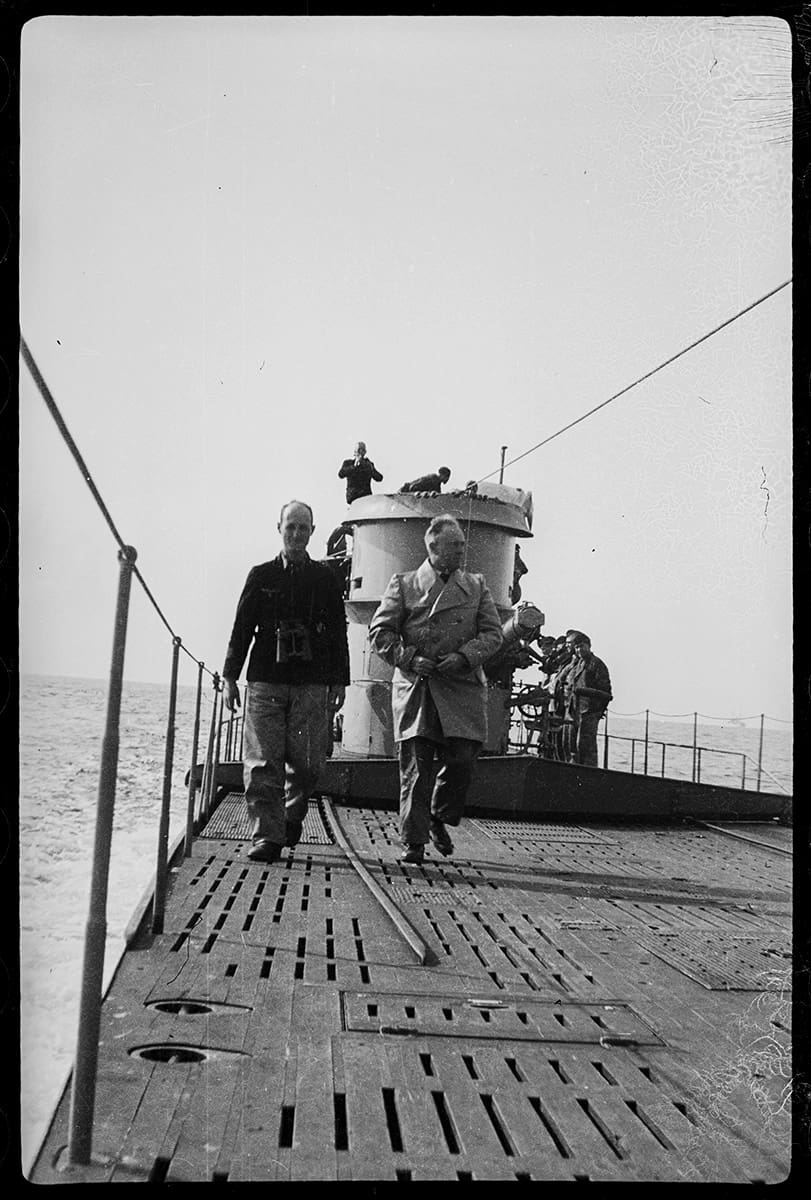
Officer (left) and Captain Harald Jurst (right) walking along the deck. The 105-mm gun (10.5-cm SK C/32) and the crew can be seen behind, to their right. The Baltic Sea. October 1940.
Officer (left) and Captain Harald Jurst (right) walking along the deck. The 105-mm gun (10.5-cm SK C/32) and the crew can be seen behind, to their right. The Baltic Sea. October 1940.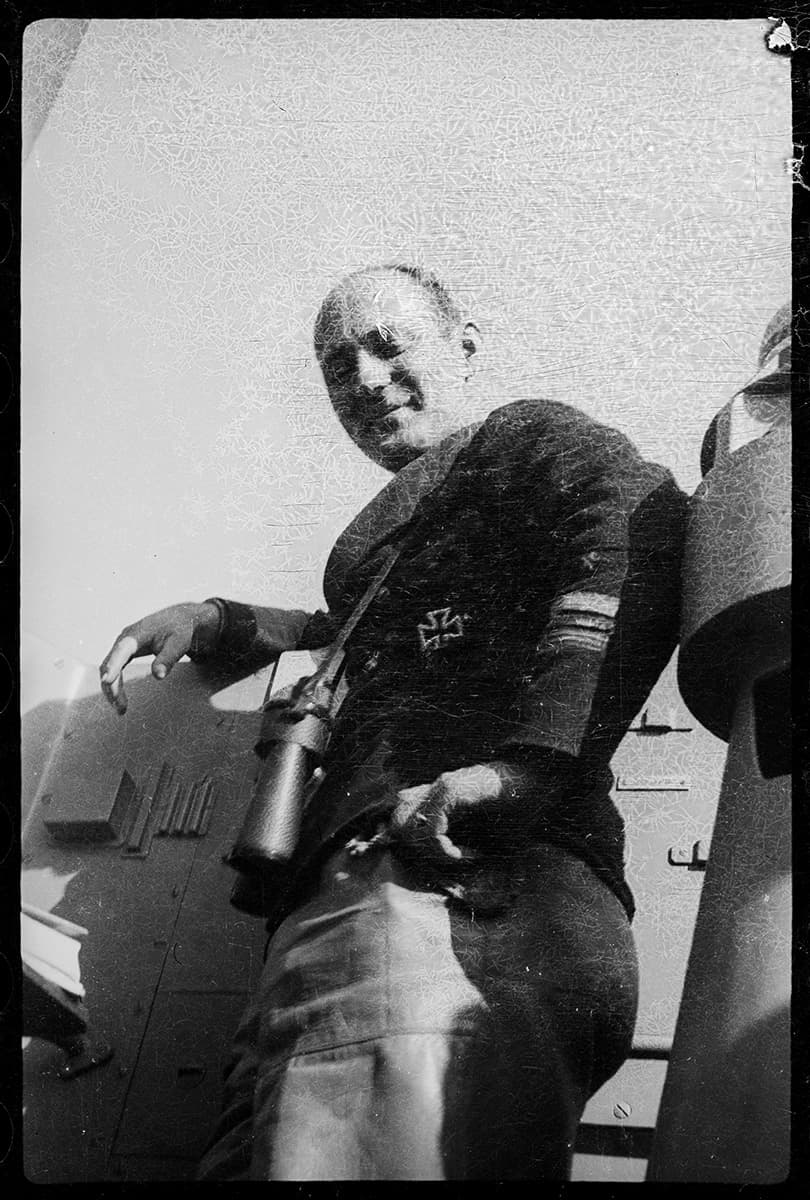
An officer with an Iron Cross on his tunic and binoculars around his neck stands on the deckhouse near the optical firing control device (UZO). The Baltic Sea. October 1940.
An officer with an Iron Cross on his tunic and binoculars around his neck stands on the deckhouse near the optical firing control device (UZO). The Baltic Sea. October 1940.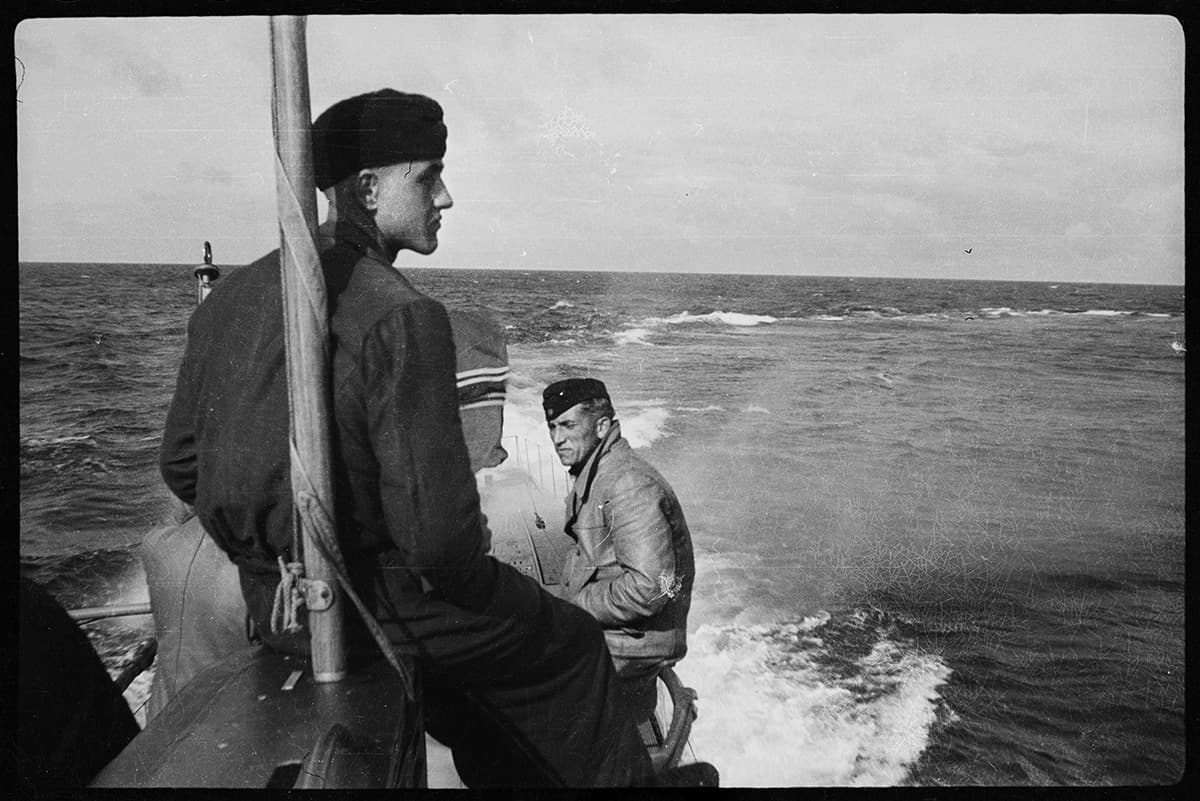
The crew, together with the watch, has a rest on the deckhouse. Fences of the anti-aircraft platform, flag and other elements can be seen. Taking into account shaved of the crew it can be assumed that it is the first days of the mission. The Baltic Sea. October 1940.
The crew, together with the watch, has a rest on the deckhouse. Fences of the anti-aircraft platform, flag and other elements can be seen. Taking into account shaved of the crew it can be assumed that it is the first days of the mission. The Baltic Sea. October 1940.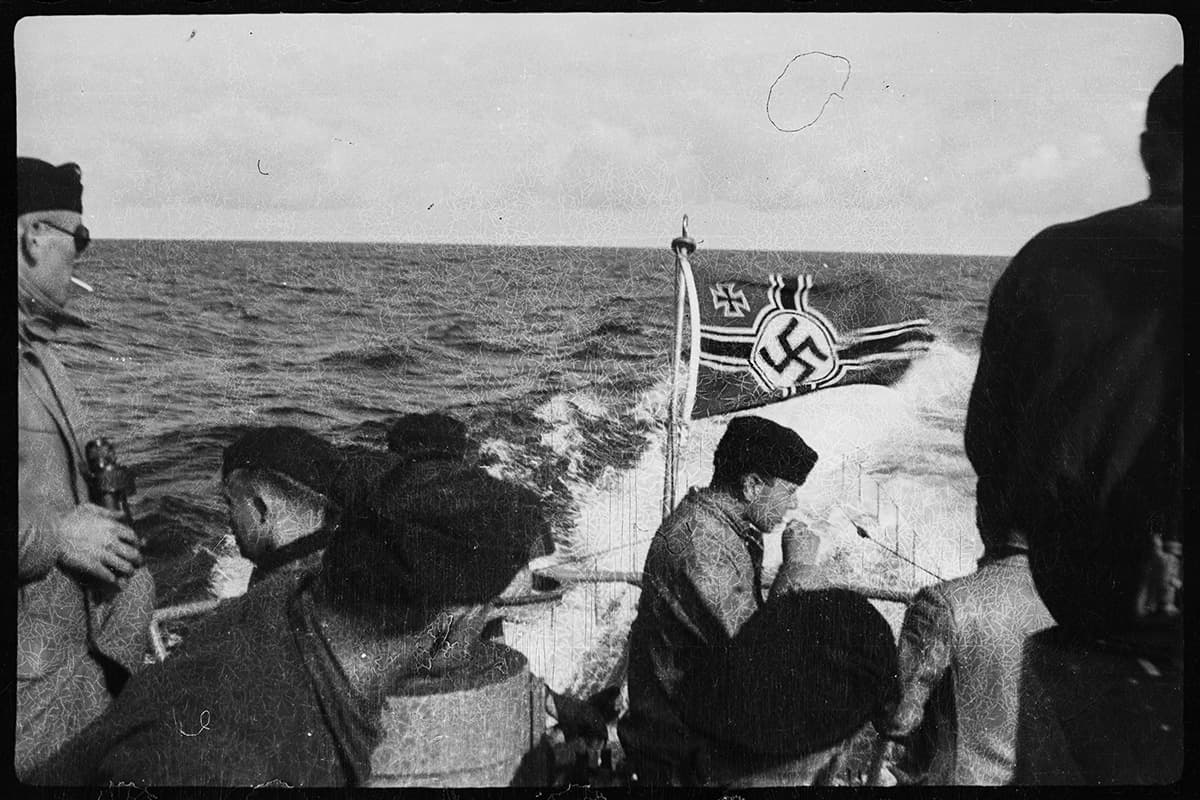
The crew, together with the watch, has a rest on the deckhouse. Fences of the anti-aircraft platform, flag and other elements can be seen. Taking into account shaved of the crew it can be assumed that it is the first days of the mission. The Baltic Sea. October 1940.
The crew, together with the watch, has a rest on the deckhouse. Fences of the anti-aircraft platform, flag and other elements can be seen. Taking into account shaved of the crew it can be assumed that it is the first days of the mission. The Baltic Sea. October 1940.